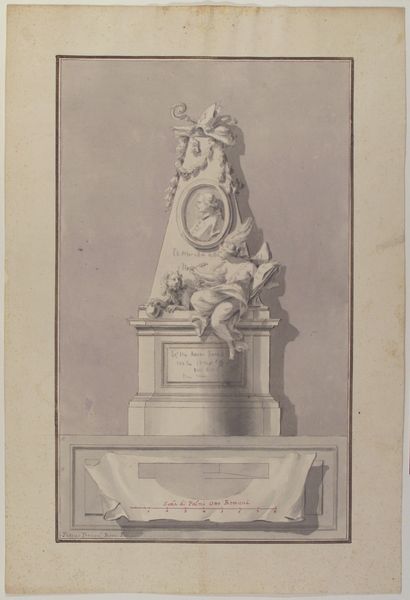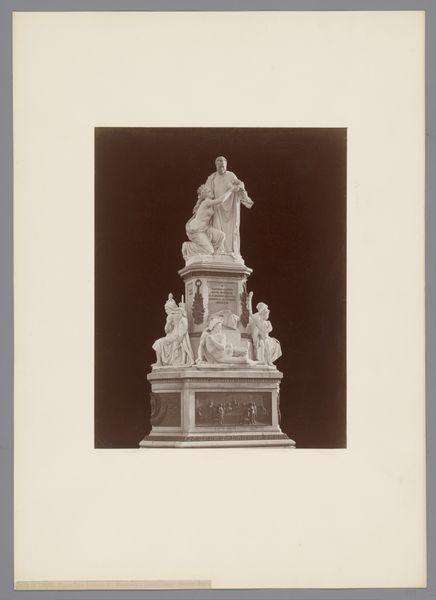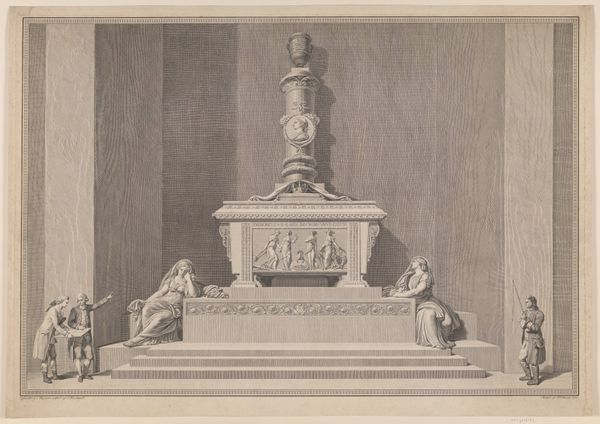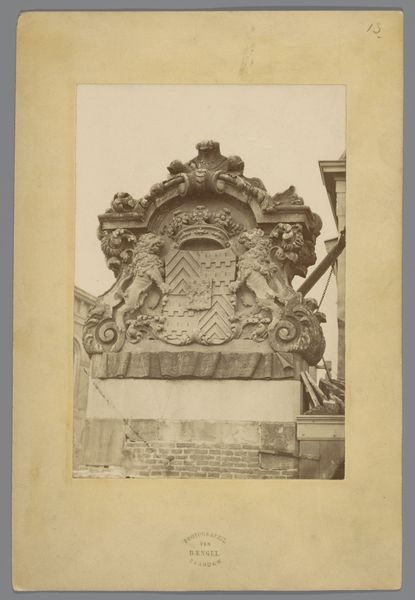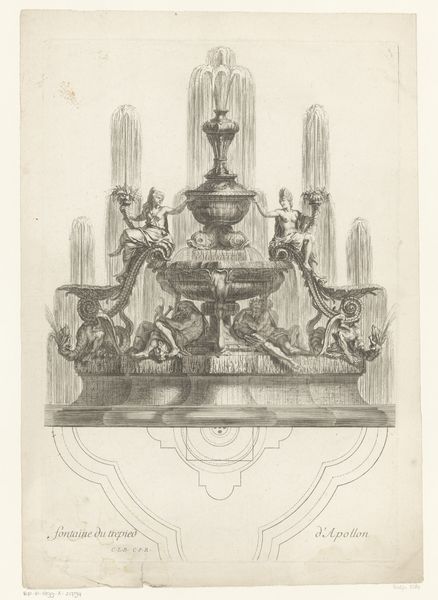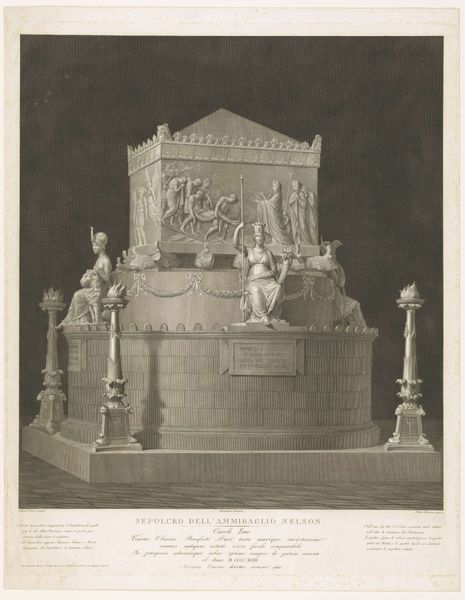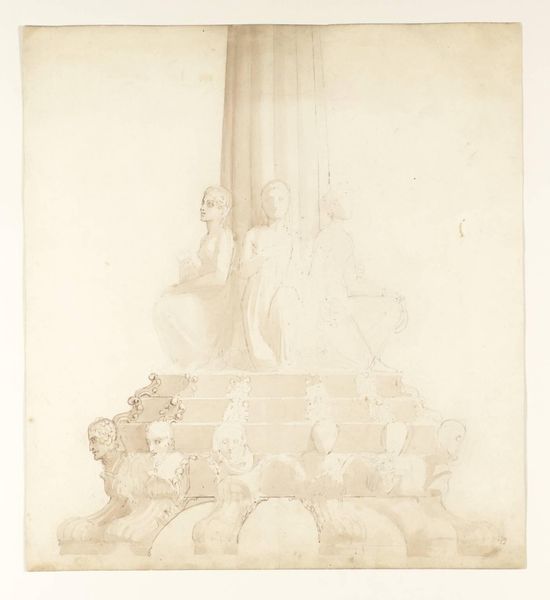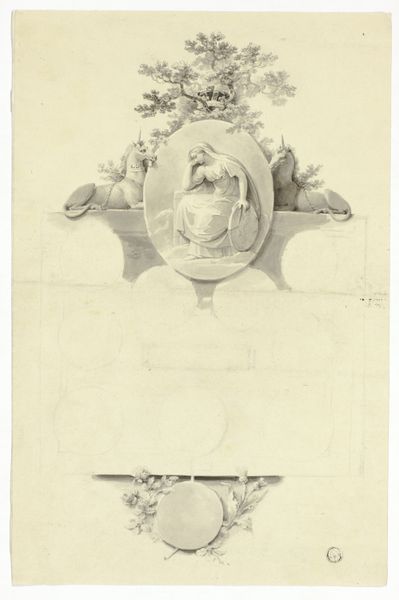
drawing, sculpture, pencil
#
drawing
#
11_renaissance
#
geometric
#
sculpture
#
pencil
Dimensions: height 414 mm, width 538 mm
Copyright: Rijks Museum: Open Domain
Editor: We are looking at a pencil drawing entitled “Fontein van Neptunus,” or Fountain of Neptune, likely created sometime between 1650 and 1800. It's attributed to an anonymous artist and held at the Rijksmuseum. I find its level of detail kind of mesmerizing. What stands out to you when you look at it? Curator: You know, that rendering… it feels less like a blueprint and more like a daydream, doesn't it? The cool precision of the lines, the hinted-at grandeur of the sculpture itself. It whispers stories of emperors and salty gods. Editor: Emperors, how so? Curator: Well, Neptune, of course, with his trident is a symbol of power and dominion. This wasn’t just about water; it was about making a statement, you know? “Look at my control, even over the sea!” That the artist is anonymous suggests to me that it was made either as documentation or, more fancifully, as a presentation piece, demonstrating artistic skill in an attractive format. It almost has a surreal quality; that kind of detailed fantastical structure only found in the mind, and in the sketchpad! It could even have been a reflection on power. What does its being a pencil drawing add, for you? Editor: It definitely highlights the intention. A sculpture feels immutable. This, instead, captures a fleeting moment in imagination and allows us to contemplate not only power but also intention in the process. It's thought provoking, a portal. Curator: Absolutely! Like a secret whispered on paper, waiting to be discovered. And maybe that’s the real magic here – not the grandeur of Neptune, but the quiet act of creation. Editor: A quiet creation that invites endless contemplation and leaves room for your imagination. A testament that not all statements of power need to be loud and overwhelming!
Comments
No comments
Be the first to comment and join the conversation on the ultimate creative platform.

